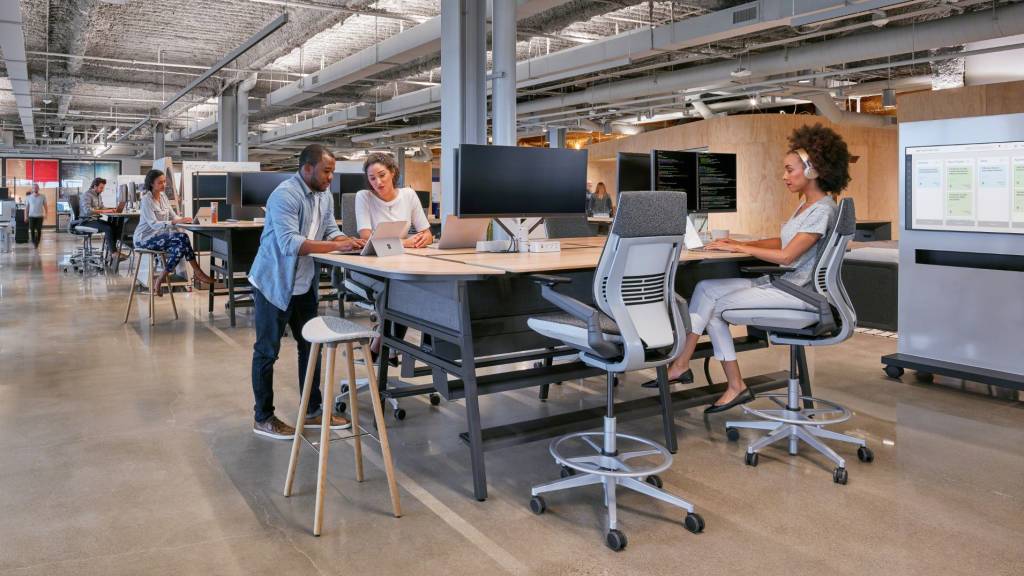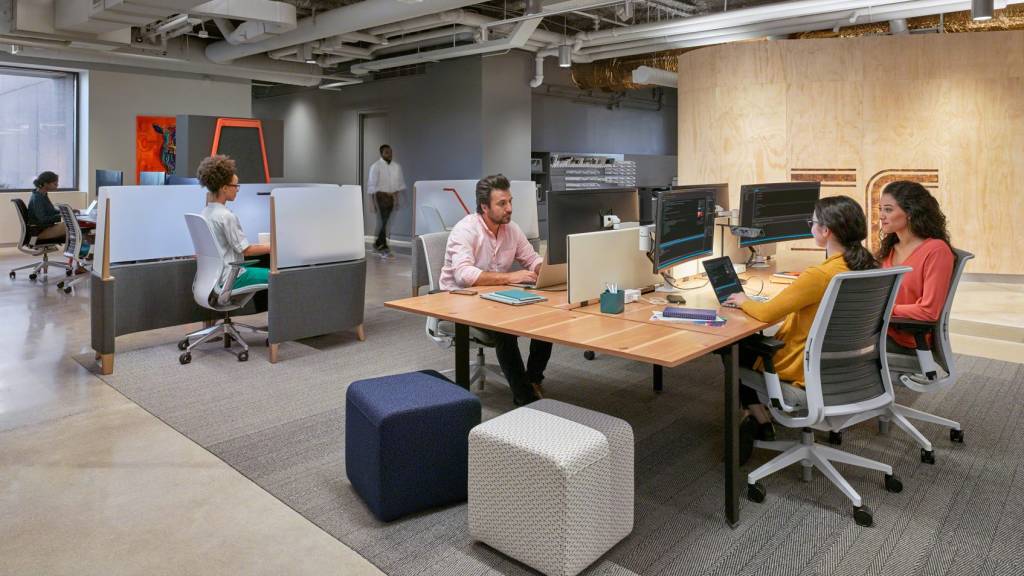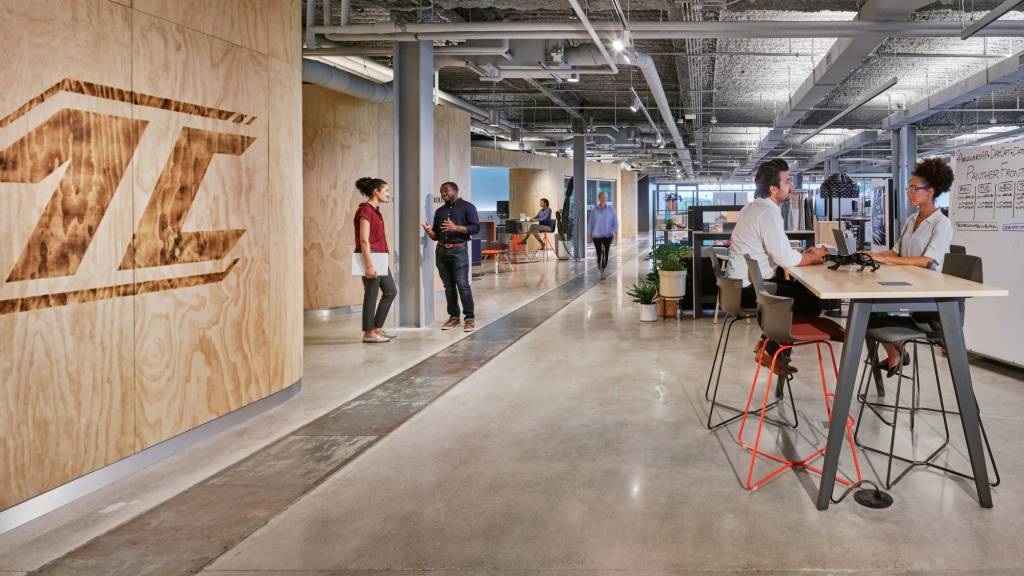Transforming IT at Steelcase: An Agile Case Study
Workplace Strategy Implications
“The role of facilities management and construction was completely redefined during this project. We needed to become faster, more customer focused, and more adaptive.”
Brian BaarProject Manager, Facilities Management
Facilities Management and Real Estate
In an agile environment, the facility manager’s role becomes even more integral to the business. Place can either impede or enhance the ability of teams and the organization to perform effectively. Empowering IT employees to adjust their space in order to best fit their process and project, means planning and coordination need to adjust as well. Long lead times, cumbersome request forms and disruptive installs are barriers to speed and flexibility.
Given the complexity of agile and the intersection of so many variables, the process for placemaking and the roles of real estate and facilities management must change. Tensions describe the elements that must both exist going forward.
Tensions

- The need for efficiency and flexibility
- The need for facilities ownership and user empowerment
- The need for preplanned space and a curated kit of parts
- The need for infrequent capital expenditures and ongoing operating expenditures
Key shifts are also required. For example, from directing and controlling to enabling and empowering, and from managing space to supporting processes and culture.
Shifts

- Moving from maintaining standards to iterative improvements
- Moving from square feet per person to square feet per team
- Moving from designing for density to designing for movement
- Moving from change orders to on-demand responses
- Moving from connections in scheduled space to connections in open space
- Moving from time-bound project space to ongoing homes for teams
- Moving from pre-set infrastructure to fluid infrastructure
Design
Design that supports agile work must take into account the unique aspects of the work. The agile work process is specialized and typically intense. It includes new ways for individuals and teams to work. Based on this need, the Steelcase Design Studio has distilled our lessons learned from the research and prototypes into implications for supporting agile principles and cultural values. In creating places for agile to thrive, consider:
Enabling agile teams
- Providing space within agile studios for agile ceremonies; Sprint, Sprint Planning, Daily Scrum, Sprint Review, Sprint Retrospective
- Providing space within agile studios for agile artifacts; Sprint Backlog, Product Backlog, increment board, information radiators, customer personas
- Designing adaptive space; giving permissions to teams to ‘own’ their space; rearrange furniture; self-organize around process/mode of work
- Providing spaces for individual flow while staying in/near the studio, balancing the connection with the team
- Promoting embedded learning; enable team members to problem solve and build knowledge in real time

Engaging others
- Planning for the expansion and contraction of teams to support the ebb and flow of work on an ongoing basis
- Designing agile studios to accelerate getting into the work stream; allowing partners, consultants, customer to ramp up quickly team thinking
- Providing acoustic buffers; allow teams to engage and freely interact within their team (co-located and distributed) while buffering distractions from other teams

Leveraging the built environment
- Building opportunities for ambient awareness within the overall environment; providing vertical real estate and digital displays to support visual access to information about the overall business and persistent information about the department and the team. In addition, provide team space to display tangible examples of what they’re working on.
- Embedding biophilia/wellbeing into the environment; providing data workers much-needed relief from intense work with tools and technology
- Allowing teams to express identity and personality by way of landmarks and thresholds
- Designing a broader set of choices to support a sustainable community; providing a larger context of settings within the overall space to facilitate integrating teamwork into the broader business landscape, supporting a team of teams within an agile environment

NEXT CHAPTER – What Work Looks Like Now
PREVIOUS CHAPTER – Key Insights


